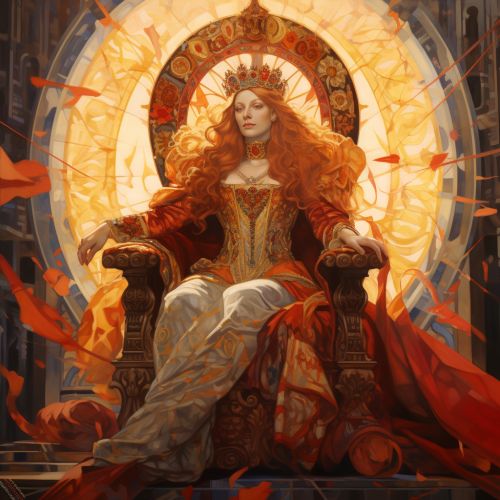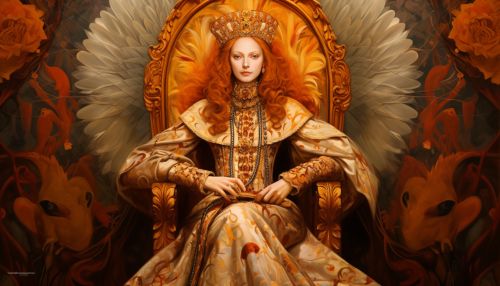Elizabeth I of England
Early Life
Elizabeth I was born on September 7, 1533, in Greenwich Palace, the daughter of Henry VIII and his second wife, Anne Boleyn. Her birth was a disappointment to her father, who had hoped for a male heir to continue the Tudor Dynasty. Elizabeth's mother was executed when she was just two and a half years old, and she was declared illegitimate. However, her father's subsequent marriages and the complex succession issues that followed led to Elizabeth eventually becoming queen.
Education
Elizabeth received an excellent education, as was customary for a child of the royal court. Her tutors included the highly respected scholars William Grindal and Roger Ascham, who taught her a variety of subjects including mathematics, history, rhetoric, and several languages. Elizabeth was fluent in French, Italian, and Latin, and also had some knowledge of Greek and Spanish.
Ascension to the Throne
Elizabeth ascended to the throne on November 17, 1558, following the death of her half-sister, Mary I. Her coronation took place on January 15, 1559. Elizabeth's reign is known as the Elizabethan Era, a period noted for the flourishing of English drama, led by playwrights such as William Shakespeare and Christopher Marlowe.
Reign
Elizabeth's reign was marked by several significant events and policies. She established the Church of England as the country's primary church, navigated complex foreign relations, particularly with Spain and France, and faced several plots and rebellions.


Religious Policy
One of Elizabeth's first acts as queen was to establish the Church of England's independence from the Roman Catholic Church, a move known as the Elizabethan Religious Settlement. This policy sought to create a middle ground between Roman Catholicism and Protestantism, and while it was not universally popular, it was generally successful in preventing religious conflict within England.
Foreign Policy
Elizabeth's foreign policy was characterized by caution and pragmatism. She avoided entangling alliances and sought to maintain a balance of power among the European nations. Her most significant foreign policy challenge came from Spain, culminating in the Spanish Armada's failed invasion of England in 1588.
Plots and Rebellions
Throughout her reign, Elizabeth faced several plots and rebellions, many of which were rooted in opposition to her religious policies or in disputes over her legitimacy as queen. The most significant of these was the Babington Plot, which led to the execution of Mary, Queen of Scots, a Catholic who many saw as a legitimate alternative to Elizabeth.
Death and Legacy
Elizabeth I died on March 24, 1603, at Richmond Palace. She was succeeded by James VI of Scotland, who became James I of England, marking the start of the Stuart Dynasty. Elizabeth's reign is often considered a 'golden age' of English history, particularly in terms of literature and the arts. Her skill in navigating complex political landscapes, both domestically and internationally, has led to her being considered one of England's greatest monarchs.
